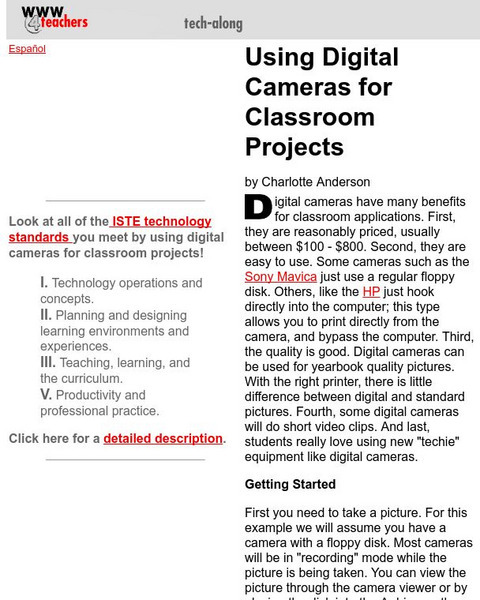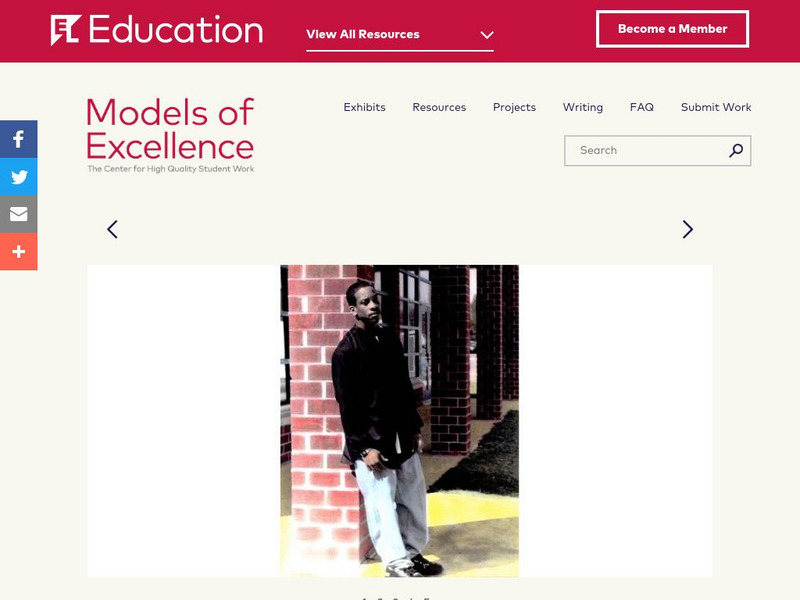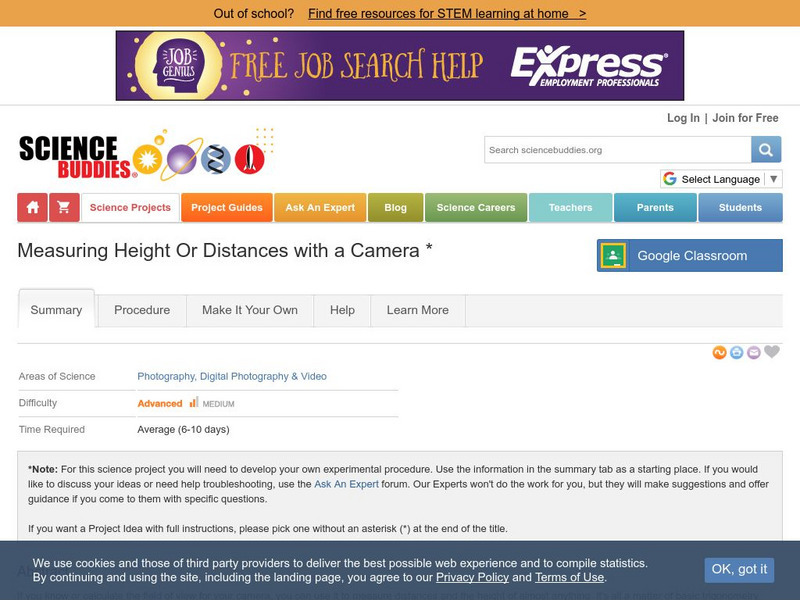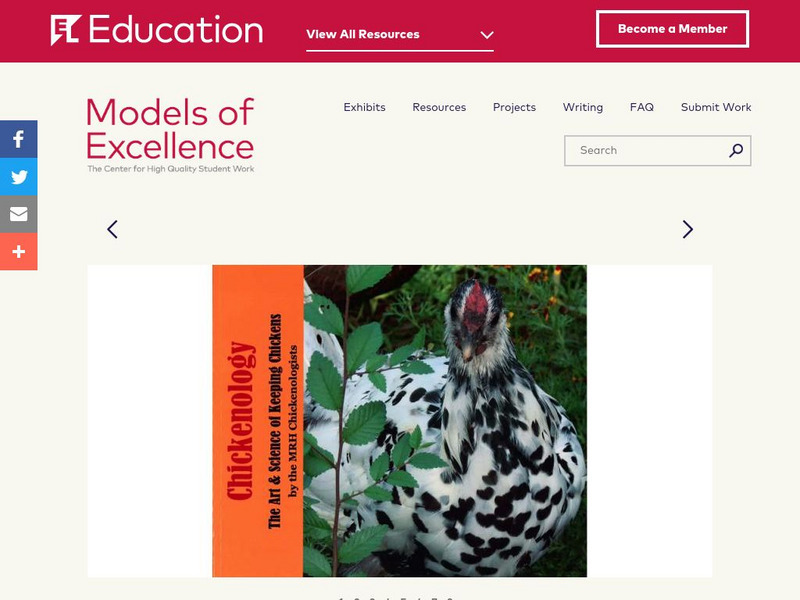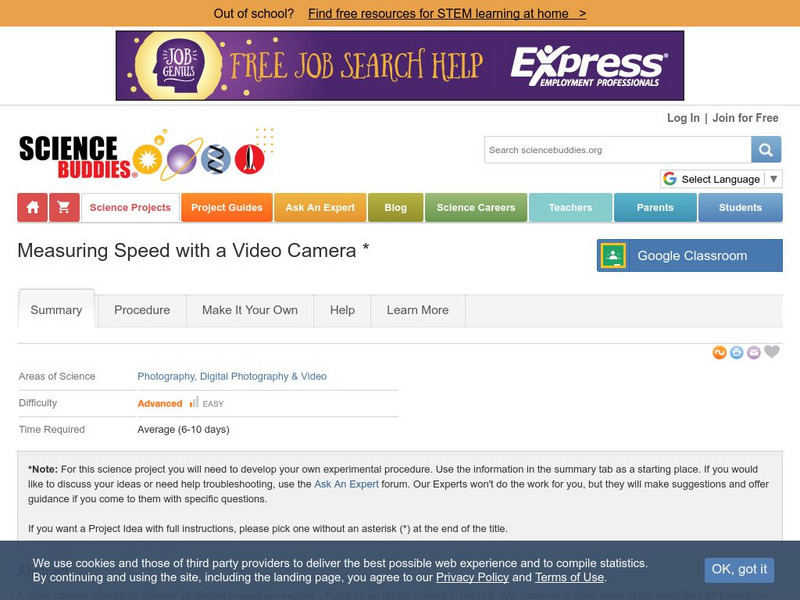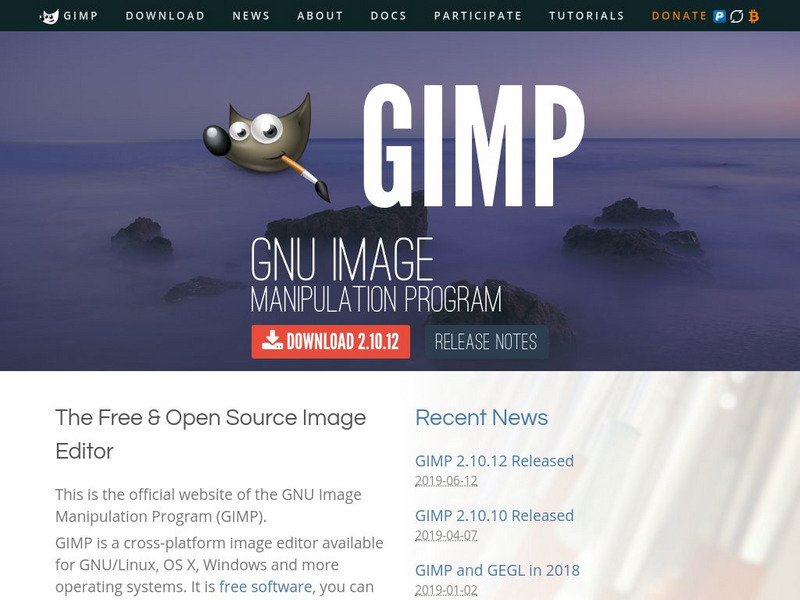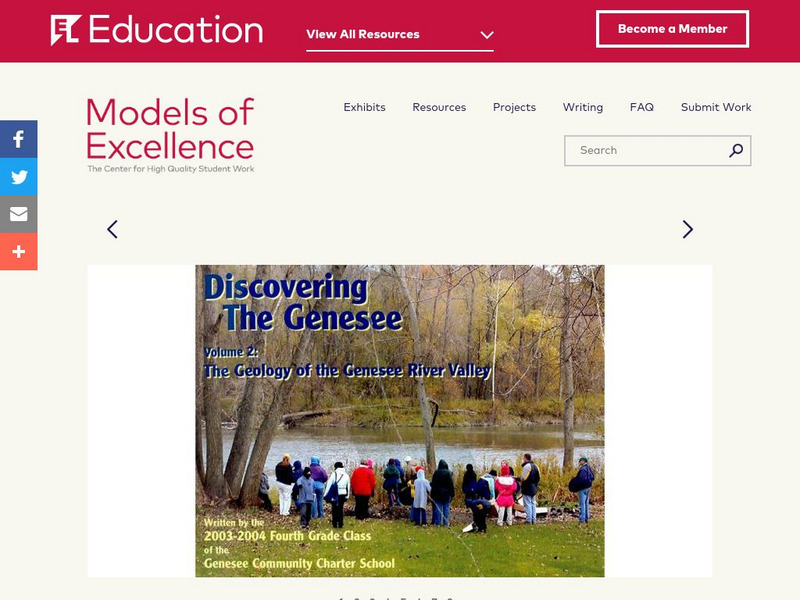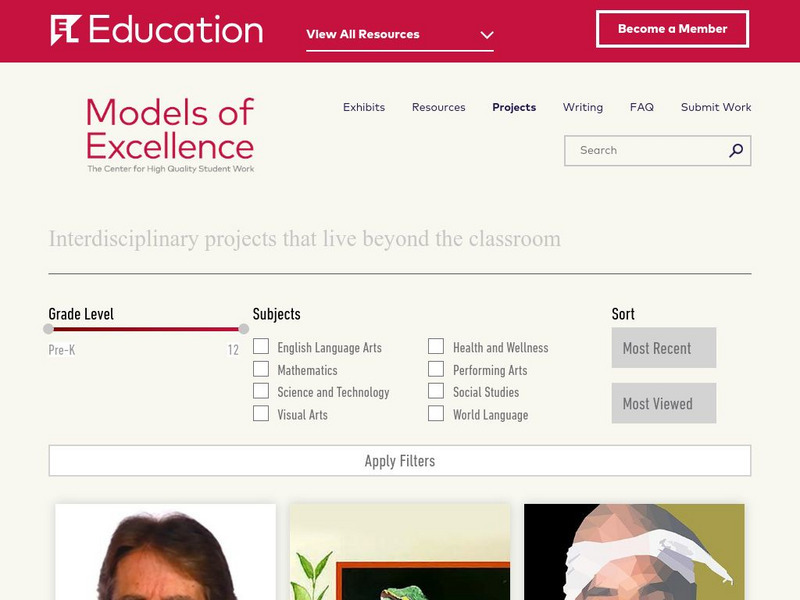Science Buddies
Science Buddies: The Golden Rules of Photography
What is it that famous photographers do to make their images so pleasing to the eye? Find out if simple rules of geometry and symmetry can make you a better photographer.
Other
4 Teachers: Using Digital Cameras for Classroom Projects
This article from 4Teachers.org details the many benefits of using a digital camera in the classroom, exciting ways to incorporate pictures into student work, and advice on getting started. There is also a handout you can use to...
Alabama Learning Exchange
Alex: What Are You Wearing?
Learners will use a digital camera to take pictures that will be used to create a multimedia project that illustrates the appropriate and inappropriate dress code for a high school.
EL Education
El Education: Photographic Self Portraits
Students learn to translate conceptual thinking into photographs by creating self portraits with digital photography.
EL Education
El Education: Fourth Grade Tumbler's Manual
This manual was created by 4th grade students at the Alice B. Beal Magnet School in Springfield, Massachusetts, during a learning expedition on rocks and minerals. The expedition included fieldwork to local geological sites and to...
Science Buddies
Science Buddies: Image Compression vs. Image Quality: Finding the Best Tradeoff
In this project you'll learn about how digital image files are encoded, and how digital images can be compressed so that the files take up less storage space and can be transmitted more quickly. You will also measure the quality of...
Alabama Learning Exchange
Alex: My Future Life: Let's Get Real
This lesson requires students to select a career and explore the requirements for their potential job. They will work with a reality life situation of married versus single, number of children and challenge events. Students will...
EL Education
El Education: A Color Expedition
These digital photographs were created by pre-kindergarten students at The College School, located in St. Louis, Missouri. As part of a Learning Expedition on color, students went on class walks to look for specific colors, noticing...
Science Buddies
Science Buddies: Color Saturation
Lively, vivid colors can add pizzazz and turn a dull photo into a work of art. Learn how changing the saturation levels of the colors in your photo can really make it pop.
Science Buddies
Science Buddies: Camera Lens Testing
This activity helps students learn more about cameras, and how to take better pictures.
Science Buddies
Science Buddies: Pinholes, Light and Aperture Size
Pinhole cameras are not a thing of the past. Even compared to all of the latest technology, a pinhole camera still gets beautiful results. Find out how this very simple aperture design works to control the way light enters the lens of...
Science Buddies
Science Buddies: Measuring Height or Distances With a Camera
If you know or calculate the field of view for your camera, you can use it to measure distances and the height of almost anything. It's all a matter of basic trigonometry.
EL Education
El Education: Give Bees a Chance
This book was created by 6th grade students at the Genesee Community Charter School as part of a learning expedition on bees and beekeeping. They investigated the Colony Collapse Disorder (CCD) - a local and national threat to bees,...
EL Education
El Education: Chickenology: The Art and Science of Keeping Chickens
This manual was written by a group of middle school and high school students in the Maplewood Richmond Heights school district. The students, known as the "Chickenologists", care for the district's flock of chickens. This comprehensive...
EL Education
El Education: Collecting Nature's Alphabet
This book features two separate yet related projects created by kindergarten students at The College School in St. Louis, Missouri. After reading the book Discovering Nature's Alphabet, kindergarten students were inspired and asked to go...
Science Buddies
Science Buddies: Measuring Velocity With a Video Camera
A video camera records 30 "frames" or distinct images per second. (That's for an NTSC camera in the U.S. PAL cameras in other areas of the world take 25 frames per second.) You can use this fact to time events and measure velocity. One...
Science Buddies
Science Buddies: Camera 'Shakes'
You can compare the picture quality for photos taken at different shutter speeds with the camera handheld vs. with the camera on a tripod. (This is best done with a camera that has manual exposure control.)
EL Education
El Education: The Important Thing About Our Families
Students write complete sentences about their families. As they learn to punctuate sentences correctly, type them on a computer, and take digital pictures, they work together to create a class book.
EL Education
El Education: Recipe for Rochester
Students learn about the history of industry in their home town through research, field visits, and a local historian. Students then combine the information they gathered with recipes, illustrations, and digital pictures to create a...
EL Education
El Education: Seasons of Life
Students make multiple visits to a nursing home to develop a relationship with one person and learn about his or her life. Then students use a combination of illustrations, photographs, digital pictures, and biographical text to create a...
Other
Gimp the Gnu Image Manipulation Program
GIMP is an open source software for such tasks as photo retouching, image composition and image authoring. It works on many operating systems and in many languages. This site provides the latest releases, information about the GIMP...
EL Education
El Education: Discovering the Genesee Volume 2
The Geology of the Genesee River Valley is the second volume of a series produced by 4th grade students at the Genesee Community Charter School while studying geology, physical fitness, and artist composition. The Students spent three...
EL Education
El Education: A Revitalization Report
In 2008, the ARTWalk 2 Planning Committee in Rochester, New York invited the sixth grade students at Genesee Community Charter School to make a meaningful contribution to the expansion of public art in Rochester. A Revitalization Report...
EL Education
El Education: Iconic: The Black and White of Our Heroes and Heroines
Eleventh grade students at High Tech High Media Arts School in San Diego California are the authors of this book: Iconic: The Black and White of Our Heroes & Heroines. To create this collection of essays each student reflected on...

